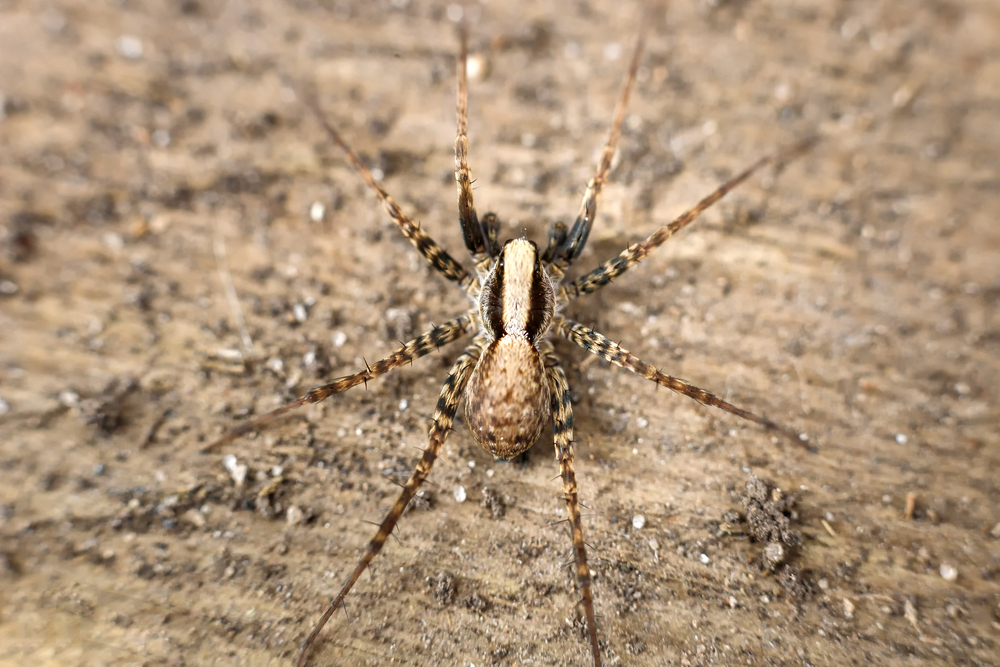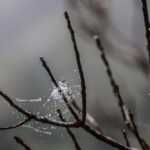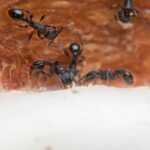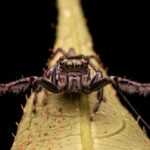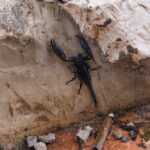How to Identify and Control the Domestic House Spider
Domestic house spiders are common in many homes, but are they harmful? This article explains the characteristics of the domestic house spider, their behavior, and simple ways to manage them, helping to ease any concerns you may have. If you’re also concerned about other pests, house flies can pose serious health risks, and it’s important to know how to address them.
- Domestic house spiders are generally harmless and can be beneficial by controlling other pest populations in the home.
- Identifying features such as their brown cephalothorax, tan abdomen with a herringbone pattern, and distinctive dark brown stripes can help distinguish them from more dangerous spiders.
- Preventing infestations can be achieved by sealing entry points, maintaining cleanliness, and utilizing DIY methods like peppermint oil or the catch-and-release approach.
Understanding the Domestic House Spider
The domestic house spider, scientifically known as Tegenaria domestica, is a member of the Agelenidae family. These Tegenaria species are ubiquitous in many homes and buildings, often making themselves comfortable in the quiet, undisturbed corners of our living spaces.
Female domestic house spiders typically measure between 1/4 to 1/2 inch long, while males can have an impressive leg span of up to 5 inches. Despite their sometimes intimidating size, these spiders do not pose any harm to humans. Their presence, while unsettling for some, is generally benign and can even be beneficial in controlling other pest insects in your home.
Knowing the harmless nature of these spiders can reduce fear and anxiety, allowing for a more rational and effective approach to managing them.
Identifying Features of Domestic House Spiders
Recognizing domestic house spiders is key to effective management. Their distinct appearance sets them apart from other common house spiders. The domestic house spider typically has a brown cephalothorax and a tan abdomen with a distinctive herringbone pattern. Their legs are banded, adding to their identifiable characteristics.
The cephalothorax also features dark brown stripes, which are quite noticeable. These spiders can sometimes be mistaken for the more dangerous brown recluse, but a closer look will reveal the telltale signs of the differences, especially the absence of the violin-shaped marking on the cephalothorax.
Recognizing these features helps prevent unnecessary panic and ensures accurate identification. Next time you see a spider, take a closer look to see if it matches the description of a domestic house spider.
Habitat and Behavior
Domestic house spiders are commonly found in less disturbed areas. They thrive in garages, sheds, lofts, cavity walls, basements, and dark corners. These locations provide the perfect environment for them to construct their cobwebs and trap prey.
Their behavior is fascinating. Domestic house spiders spin webs that consist of a silken sheet funneling into a retreat, creating a funnel shaped web. This structure is not just for catching prey but also serves as a hiding spot, making these spiders elusive and sometimes hard to spot.
These spiders mainly prey on small insects that get trapped in their webs. This predatory behavior can actually be beneficial, as it helps control other pest populations in your home. Knowing their preferred habitats and behavior patterns can help you manage their presence more effectively.
Life Cycle of Domestic House Spiders
The life cycle of domestic house spiders is both intriguing and informative. Female spiders can produce up to 250 eggs in a single egg sac and may create around 17 egg sacs throughout their lifespan. This prolific reproduction can lead to a significant spider problem if not managed properly.
After hatching, the spiderlings disperse using a method called ballooning, where they release silk threads to catch the wind and travel to new locations. This dispersal method ensures that the young spiders can find new habitats away from their birthplace.
Both male and female domestic house spiders can cohabit and mate multiple times. They reach maturity within a year, and adults can live for over a year, with many females surviving to the next year after mating. Knowing their life cycle aids in planning effective control measures.
Are Domestic House Spiders Dangerous?
Most house spiders, including the domestic house spider, are not considered harmful to humans and rarely bite. Their presence, while unsettling, does not pose a significant threat. However, it is essential to distinguish them from more dangerous spiders like the black widow or brown recluse, which require immediate attention and control.
Knowing these spiders are generally harmless can reduce fear. Their role in controlling other pests makes them more of an ally than an enemy in your home.
Differences Between Domestic House Spiders and Other Common House Spiders
Distinguishing domestic house spiders from other common house spiders is key to effective management. While common house spiders are non-threatening and often found indoors, the brown recluse is known for its venomous bite and distinctive violin marking.
Brown recluse spiders prefer undisturbed areas like corners and basements, contrasting with domestic house spiders that are often seen in living rooms. The giant house spider, on the other hand, is larger than domestic house spiders and can have a leg span of up to 4 inches.
Unlike domestic house spiders, wolf spiders actively hunt their prey instead of spinning webs. Understanding these differences can help you accurately identify and manage the specific spider species in your home.
Preventing a Domestic House Spider Infestation
To prevent a domestic house spider infestation, start by inspecting and sealing cracks or openings around windows and doors. Multiple entry points, like unsealed vents or broken screens, indicate that spiders may be entering your home in large numbers.
To further deter spiders and prevent spiders, close windows and block gaps with plaster, draught excluders, and insect screens. Keeping areas tidy and sealing gaps around doors and windows can significantly reduce the likelihood of an infestation.
Regular cleaning and decluttering of storage rooms, attics, garages, and basements are essential in preventing spider infestations. Maintaining a clean and well-sealed home effectively keeps spiders at bay.
DIY Methods to Control Domestic House Spiders
An effective DIY method to control domestic house spiders is the catch and release approach, leveraging their role in controlling other pests. Mixing peppermint oil with water can also deter spiders, as they dislike its taste. Use 5-7 drops of peppermint oil with 16 ounces of warm water.
Knocking down webs and removing food sources further helps reduce spider populations. These practical methods enable you to manage spider issues effectively without professional intervention.
When to Call Professional Pest Control
While DIY methods can be effective, there are times when professional help is necessary. If you find it challenging to control the domestic house spider problem on your own, it may be time to contact a pest management professional.
Frequently Asked Questions
What is the most common indoor spider?
The American house spider is the most common indoor spider, recognized for its small size and harmless nature. However, yellow sac spiders are also frequently encountered, characterized by their pale yellow color and small size.
Why do I have common house spiders?
Common house spiders are often drawn to your home in search of warmth and food, typically attracted by the presence of insects. They tend to thrive in warm, dark, and cluttered spaces where they can hide and hunt for prey.
Does one house spider mean more?
Seeing one house spider does not necessarily mean more are present, as they are solitary creatures. However, be vigilant for signs of an infestation to ensure your home remains spider-free.
Is a domestic house spider poisonous?
While domestic house spiders do possess venom, their fangs are too small to deliver a significant amount, making them unlikely to cause any harmful reaction in humans. Therefore, bites from these spiders are generally not a concern.
